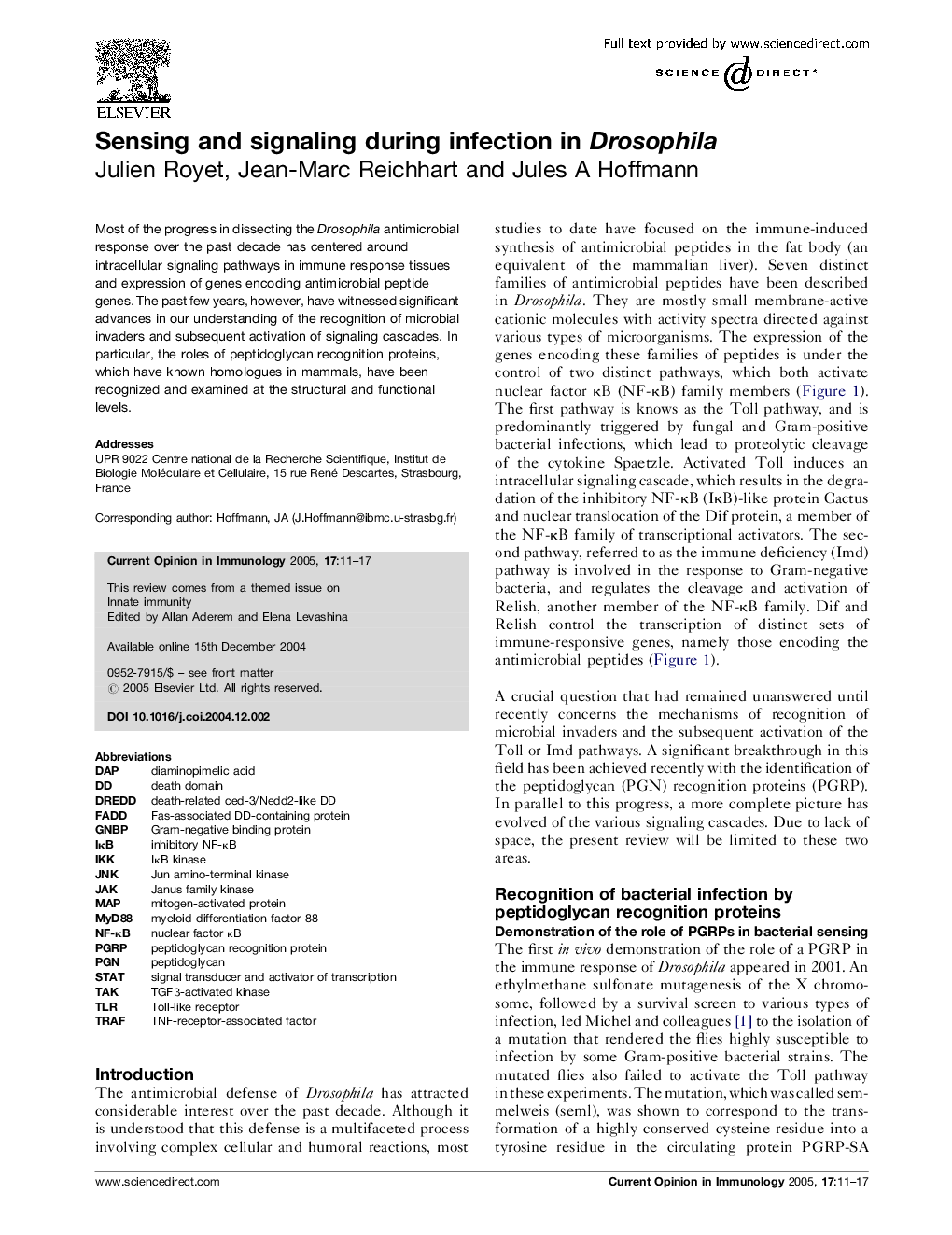| Article ID | Journal | Published Year | Pages | File Type |
|---|---|---|---|---|
| 9262887 | Current Opinion in Immunology | 2005 | 7 Pages |
Abstract
Most of the progress in dissecting the Drosophila antimicrobial response over the past decade has centered around intracellular signaling pathways in immune response tissues and expression of genes encoding antimicrobial peptide genes. The past few years, however, have witnessed significant advances in our understanding of the recognition of microbial invaders and subsequent activation of signaling cascades. In particular, the roles of peptidoglycan recognition proteins, which have known homologues in mammals, have been recognized and examined at the structural and functional levels.
Keywords
TRAFTGFβ-activated kinaseTNF-receptor-associated factorTAKDreddGNBPPGRPPGNNF-κBFADDIKKJnkMYD88DAPTLRIκBIκB kinaseSTATDiaminopimelic acidToll-like receptordeath domainnuclear factor κBSignal transducer and activator of transcriptionmapPeptidoglycan recognition proteinmitogen-activated proteingram-negative binding proteinPeptidoglycanJAKJun amino-terminal kinase
Related Topics
Life Sciences
Immunology and Microbiology
Immunology
Authors
Julien Royet, Jean-Marc Reichhart, Jules A Hoffmann,
